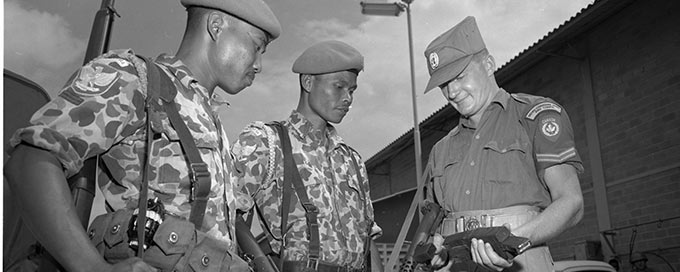The World Health Organization said that at least 900 bodies were recovered from the streets of Goma as of last Friday following five days of fighting in which the M23 rebels took control of the city.
read more
A Democratic Republic of Congo (DRC) flag flies outside the venue of an Extra Ordinary SADC Summit in Harare, Zimbabwe, January 31, 2025. Image- Reuters
Fighting last week between Congolese government forces and Rwanda-backed rebels in the major eastern city of Goma left at least 900 people dead, the U.N. health agency said Monday, raising the previously cited death toll of 773.
The World Health Organization said that at least 900 bodies were recovered from the streets of Goma as of last Friday following five days of fighting in which the M23 rebels took control of the city.
The WHO cited nearly 2,900 injuries in the fighting. The U.N. and Congo’s government had earlier put the provisional death toll at 773.
The M23 rebels are backed by some 4,000 troops from neighboring Rwanda, according to U.N. experts, far more than in 2012 when they first captured Goma. They are the most potent of the more than 100 armed groups vying for control in Congo’s mineral-rich east, which holds vast deposits critical to much of the world’s technology.
Meanwhile, the regional blocs of southern and eastern Africa will hold a joint summit in Tanzania’s commercial capital Dar es Salaam on Feb 7-8 to discuss the conflict in eastern Congo, Kenya’s President William Ruto said on Monday.
Who are the M23 rebels?
The M23 rebels are a group made up primarily of ethnic Tutsis vying for a foothold in eastern Congo, where a decades-long conflict has raged. The Tutsis, who could not integrate into the Congolese army, led a failed insurgency against the Congolese government in 2012. The force went dormant for a decade, until its resurgence in 2022.
Eastern Congo was integral to the conflict in the region often referred to as ‘Africa’s world war’ between 1996 and 2003 as several armed groups fought over access to metals and rare earth minerals such as copper, cobalt, lithium and gold. As many as six million people died.
The conflict can be traced to the aftermath of the 1994 genocide in neighb

